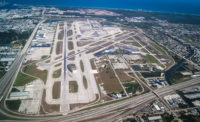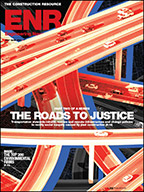With the exponentially increasing ability to capture and analyze vast quantities of data from objects—bridge piers and pavements, for example—the dream of an intelligent transportation infrastructure (ITI) is within reach. Over time, this feedback will lead to the building of ever-better infrastructure, experts say.
Yet, except for a few extraordinarily high-profile projects—such as the replacement of Minneapolis’ I-35W bridge, whose fatal 2007 collapse shook the nation’s faith in its bridges—the industry has not yet embraced long-term infrastructure monitoring.
That may change: The stars of ITI are aligning.
Federal highway funding requirements are driving increased use of technology to extract infrastructure condition metrics. Subjective judgments are out. Data is in.
MAP-21, the most recent authorization, links roadwork funding to data-based performance targets. This stipulation has triggered a rush by state departments of transportation to reach for technology to document the condition of existing roadways.
“All the DOTs are scrambling to inventory every mile of pavement the way they do bridge inspections now,” says Jim Twomey, national market lead for surface transportation at Michael Baker International, a Pittsburgh-based engineer. “DOTs are inundated with data.”
Further, public demand is rising for intelligent traffic systems (ITS). Transportation officials are fitting intersections, ramps and highways with sensors for real-time traffic control, then linking the data to cloud-based management software. The backbone for integrating transportation infrastructure data is taking shape.
Meanwhile, years of research into technology that can monitor the structural health of piles, girders and decks has led to the development of systems that deliver valuable design insight into the impact of construction, operations and the environment on the life of transportation structures. However, up until now, little long-term monitoring has been put in place because no one is ready to pay for it except in extraordinary situations, experts say.
It will take owner demand to drive integrated, long-term monitoring, though the rise of warrantied work by public-private partnerships, which are accompanied by a need to quantify conditions, increases the incentive.
Terry Bennett, senior industry strategist for civil infrastructure at Autodesk, says there is still one more barrier to ITI: While installing sensors and gathering data are the easy part, investment in a construction “internet of things” will not take off until we know what the next generation of transportation infrastructure should be.
“We still have to provide the context in which this analysis will drive decision-making,” Bennett says. “We can capture gigabytes of big data—great.” But all this data won’t necessarily serve anyone, he notes.
The 2007 collapse of the I-35W/Mississippi River Bridge in Minneapolis is an inflection point in the rise of smart infrastructure. The 1,216-ft-long, prestressed-concrete segmented bridge that replaced it opened on the site of its predecessor in September 2008. Because the collapse of the first bridge the previous year killed 13 people and injured 145, the public demanded to know how such catastrophic vulnerability could have gone undetected and how a similar occurrence would be prevented.













Post a comment to this article
Report Abusive Comment